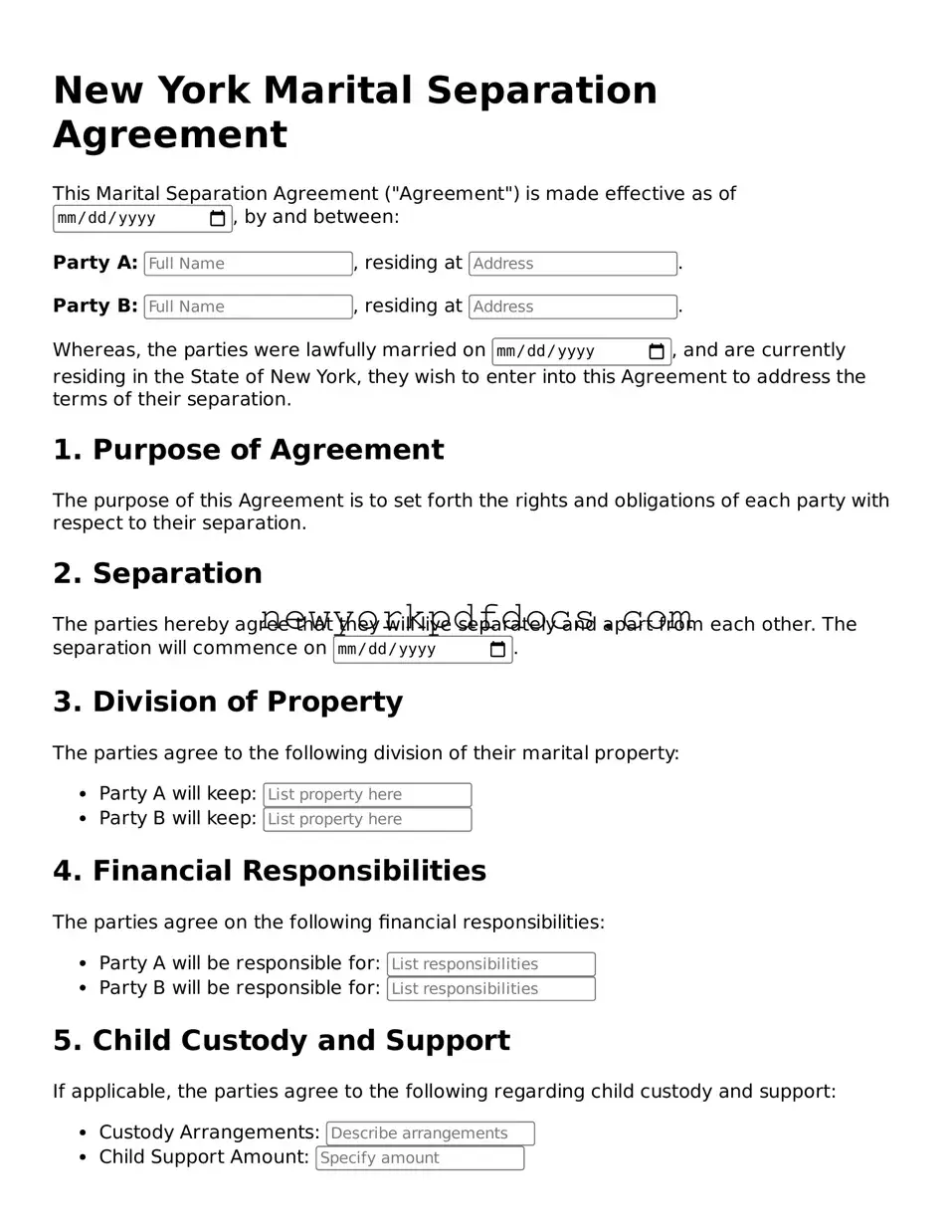Valid Marital Separation Agreement Document for New York
A New York Marital Separation Agreement form is a legal document that outlines the terms of a couple's separation. It covers important aspects like property division, child custody, and support obligations. This agreement helps ensure that both parties understand their rights and responsibilities during the separation process.
Open My Document Now
